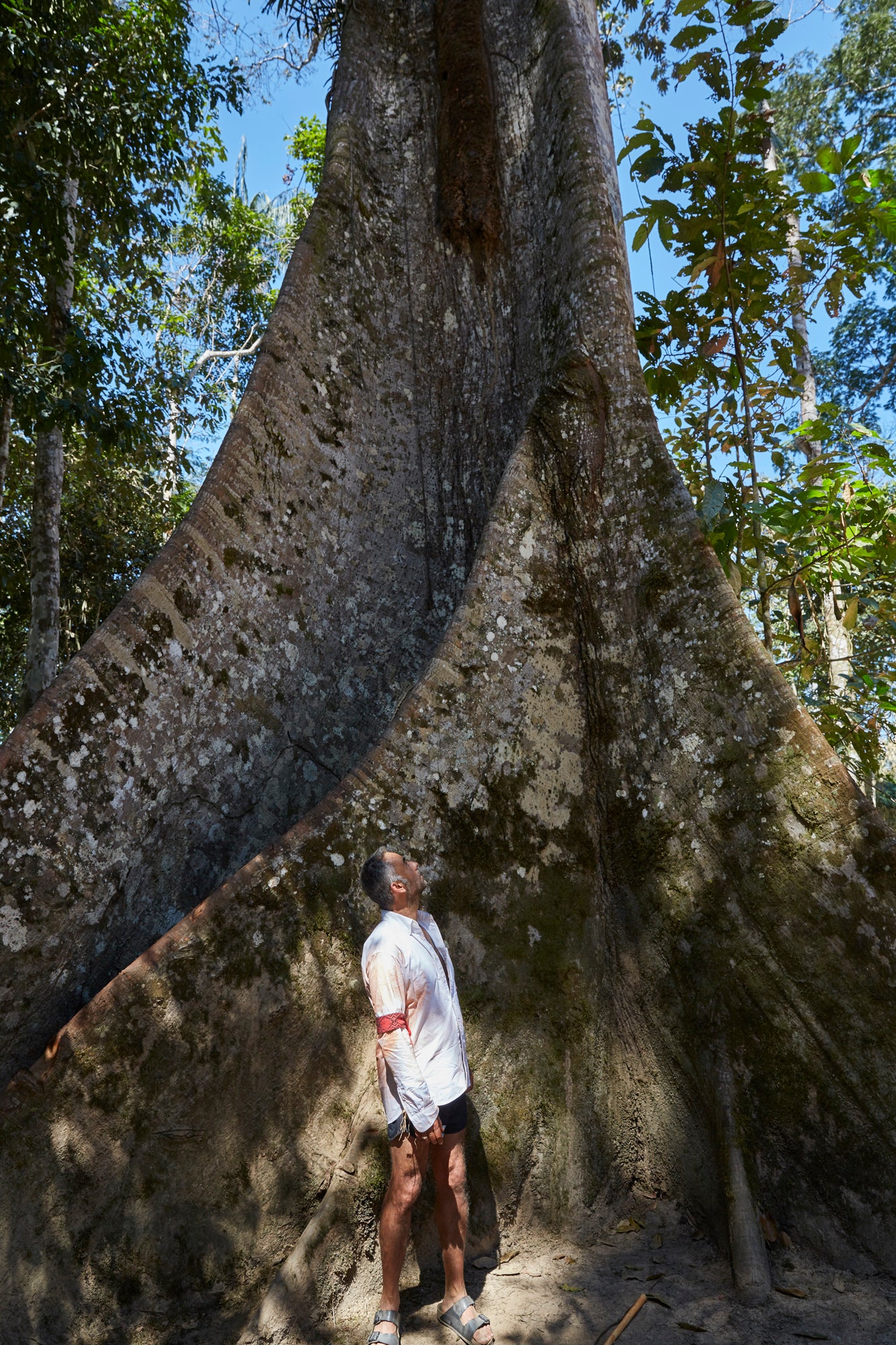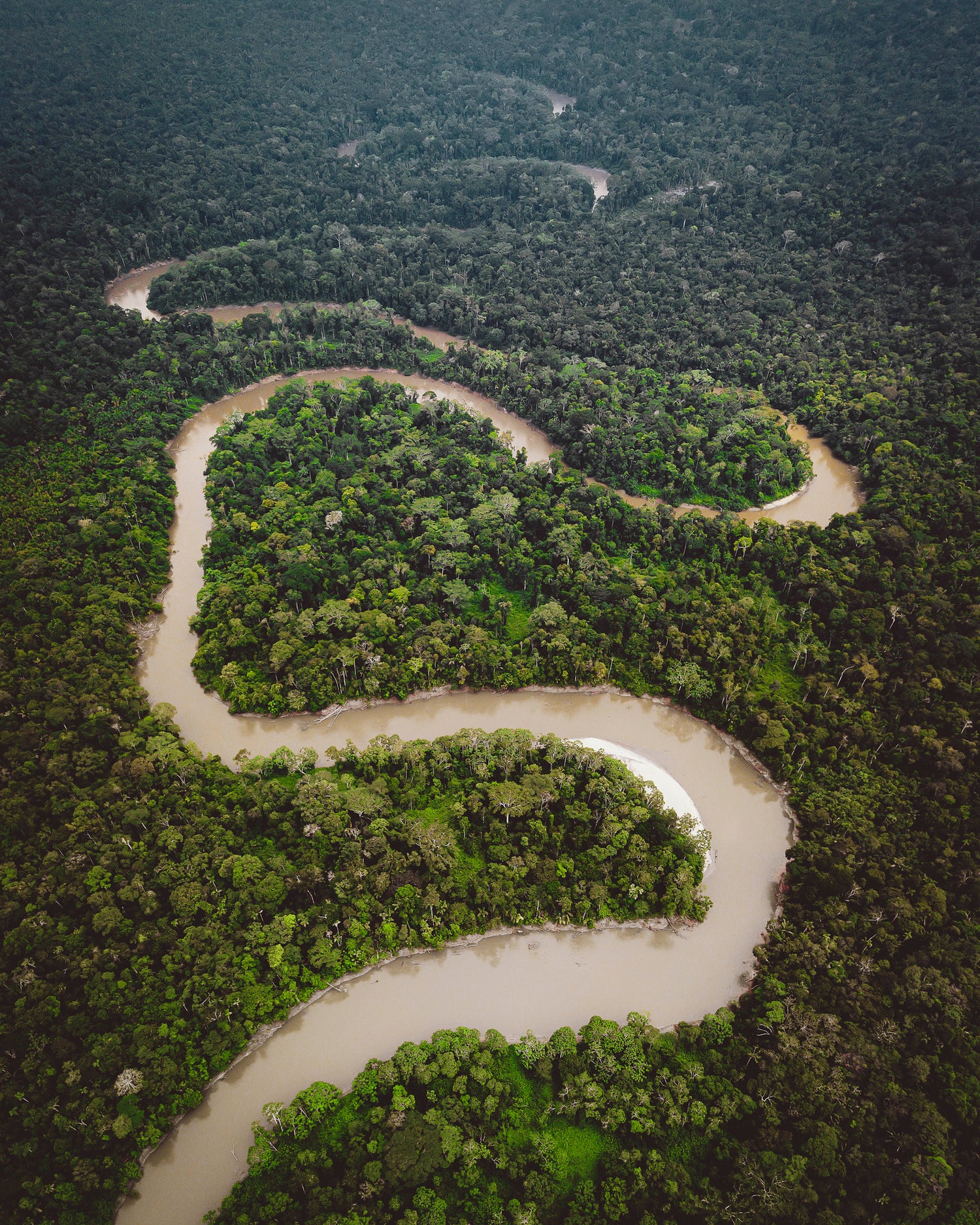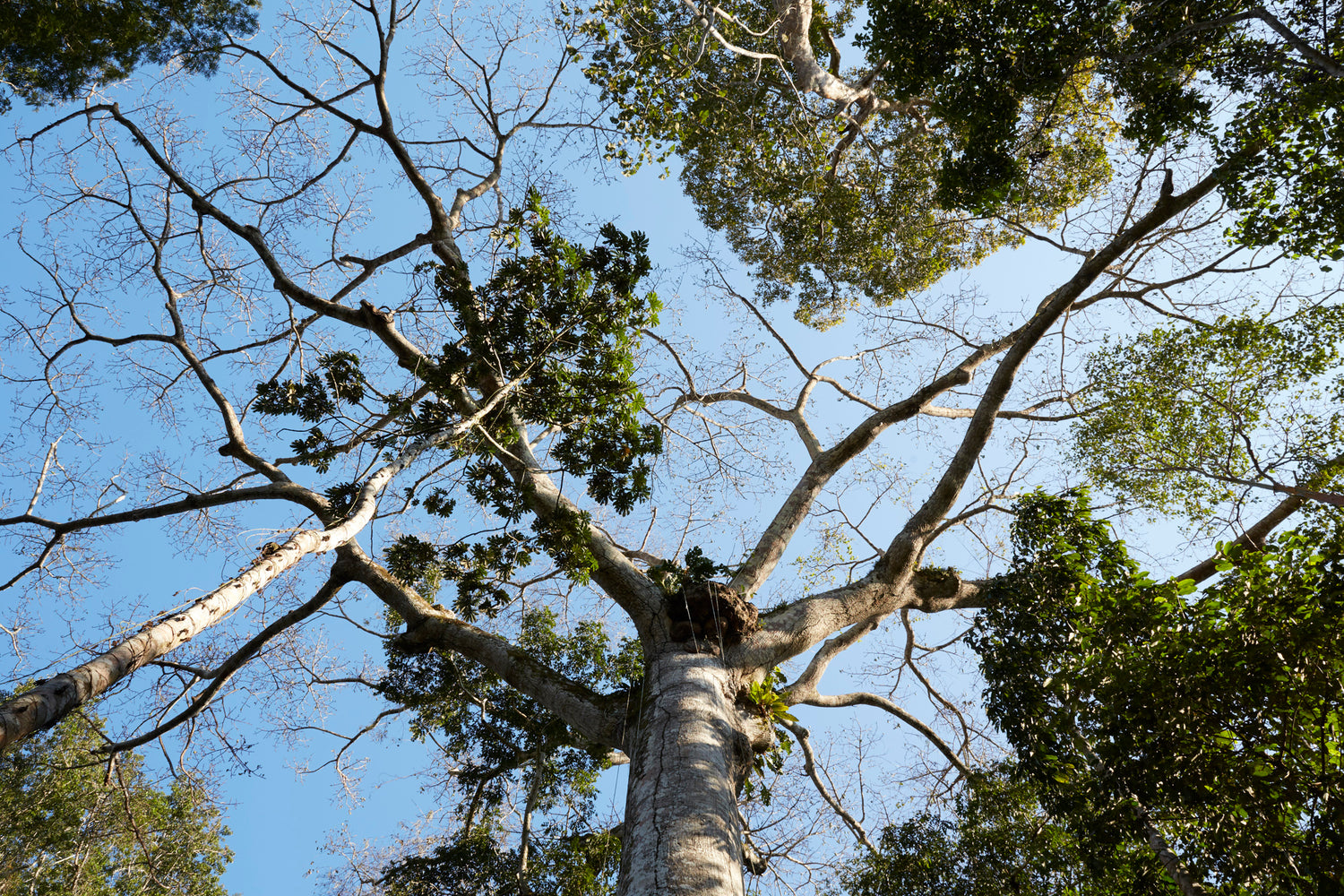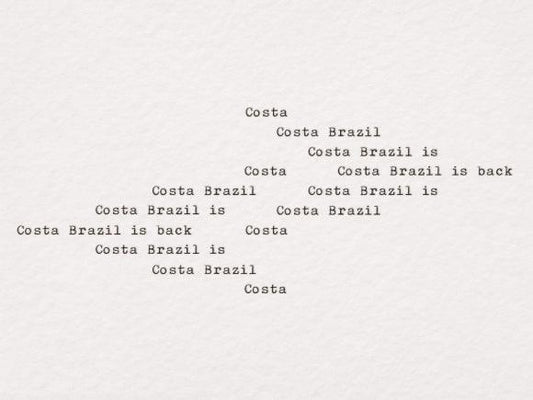Thank you for subscribing! Use code EARTH20 at checkout for 20% off.
In every healthy forest, there is a Mother Tree: a very old, very large matriarch that shares nutrients, water and information with her kin as well as hundreds of species of all ages.
Francisco Costa: I came across my first Mother Tree, a centuries-old monumental structure that can stand as tall as 260 feet, during my time along the Jari River, a northern tributary of the Amazon river in Pará. I remember feeling incredibly small as I looked up at her giant trunk and branches, which no doubt weathered more tortuous storms than I could imagine. And I remember the trees that stood beside her, their silhouettes more slender but substantial nonetheless, and how they swayed with the sun as if they were dancing to the same song.
According to author and professor at the University of British Columbia’s Faculty of Forestry, Suzanne Simard, there is reason behind this choreographed routine found amongst the forest. By shading one another, take a paper birch and a Douglas fir, there is a transfer of resources that can help with survival and reproduction.
“The trees were connected, cooperating…” Simard writes in her 2021 book, “Finding the Mother Tree: Discovering Wisdom in the Forest.” It’s a reciprocal relationship. A tree once in trouble will offer nutrients to another in need.


“When Mother Trees—the majestic hubs at the center of forest communication, protection and sentience—die, they pass their wisdom to their kin, generation after generation, sharing the knowledge of what helps and what harms, who is friend or foe, and how to adapt and survive in an ever-changing landscape. It’s what all parents do.” — Suzanne Simard, author and professor
Francisco Costa: This relationship between different trees is subtle for the average nature enthusiast like me, but beneath the surface, there is an intimate underground network of roots and fungi that help them stay in constant discussion. At one point in time, my friend, the artist and composer Kamala Sankaram, wanted to create music around a 300-year-old red oak’s mycorrhizal communication for an experimental opera titled, “The Last Stand.” Finding it too difficult to capture the tree’s electrochemical signals through sound, Sankaram did the next best thing: “The piece changed to become more about the sounds that surround the tree, and how trees are not really individuals—they're members of a community,” she said.
With Mother’s Day fast approaching, we ask you to turn your appreciation to the mothers and care givers who have supported you. It’s likely that you’ll realize there is an entire community that stands behind you—all working together to hold you up so you can be as tall as you need to be—including one magnificent Mother Tree.
Love, Francisco Costa and Costa Brazil









